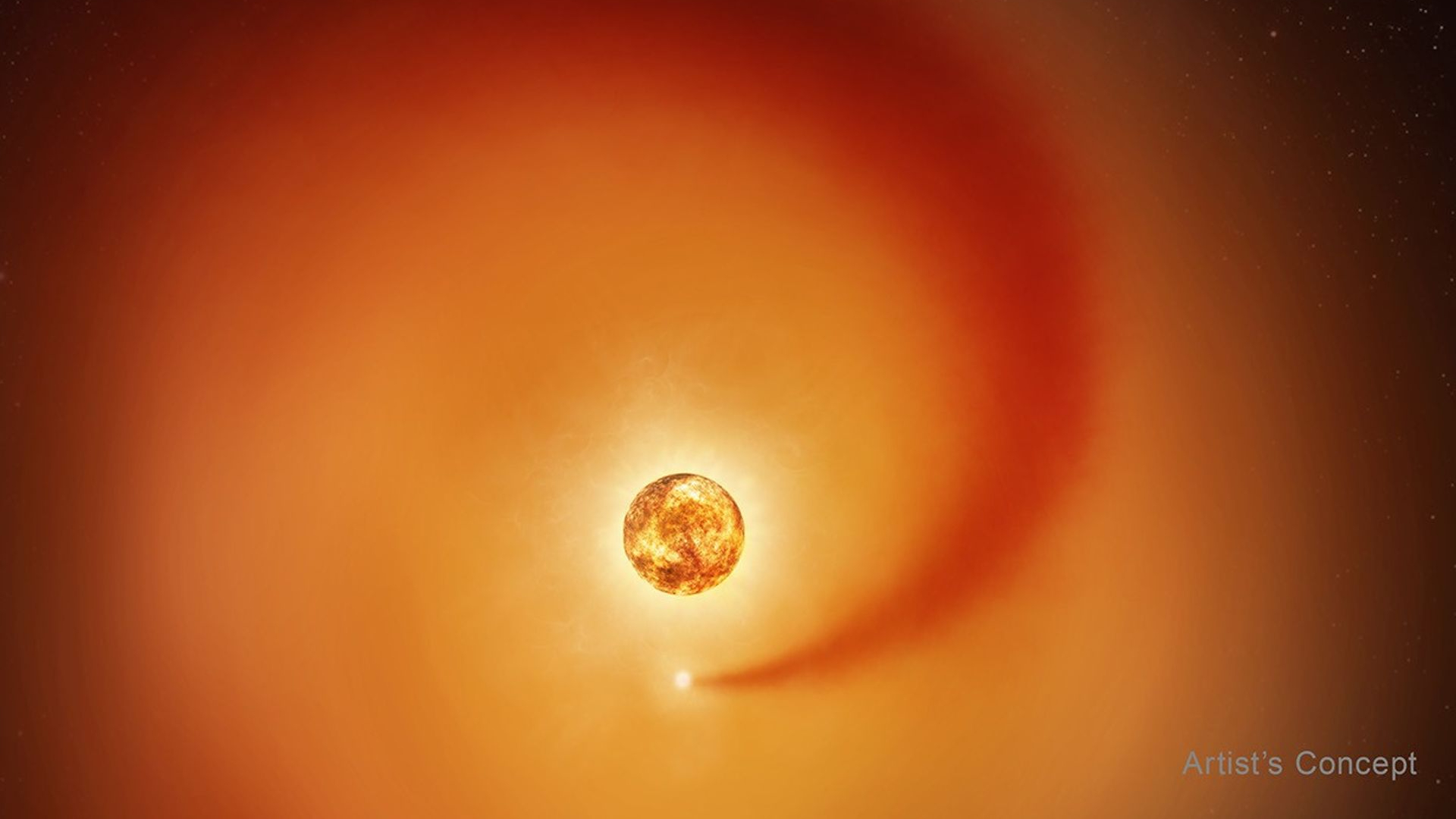The IAU Planet Defintion Draft Resolution
Editor's Note: This is the full text of a proposal for the definition of a planet released today by the International Astronomical Union (IAU) after recommendations from a seven-member committee.
See also:
- Full Story
- Gallery: The 12 "Planets"
- Members of the Committee
- Q&A on the Proposal
Draft Resolution 5 for GA-XXVI: Definition of a Planet
Contemporary observations are changing our understanding of the Solar System, and it is important that our nomenclature for objects reflect our current understanding. This applies, in particular, to the designation "planets". The word "planet" originally described "wanderers" that were known only as moving lights in the sky. Recent discoveries force us to create a new definition, which we can make using currently available scientific information. (Here we are not concerned with the upper boundary between "planet" and "star".)
The IAU therefore resolves that planets and other Solar System bodies be defined in the following way:
(1) A planet is a celestial body that (a) has sufficient mass for its self-gravity to overcome rigid body forces so that it assumes a hydrostatic equilibrium (nearly round) shape1, and (b) is in orbit around a star, and is neither a star nor a satellite of a planet.2
(2) We distinguish between the eight classical planets discovered before 1900, which move in nearly circular orbits close to the ecliptic plane, and other planetary objects in orbit around the Sun. All of these other objects are smaller than Mercury. We recognize that Ceres is a planet by the above scientific definition. For historical reasons, one may choose to distinguish Ceres from the classical planets by referring to it as a "dwarf planet."3
Breaking space news, the latest updates on rocket launches, skywatching events and more!
(3) We recognize Pluto to be a planet by the above scientific definition, as are one or more recently discovered large Trans-Neptunian Objects. In contrast to the classical planets, these objects typically have highly inclined orbits with large eccentricities and orbital periods in excess of 200 years. We designate this category of planetary objects, of which Pluto is the prototype, as a new class that we call "plutons".
(4) All non-planet objects orbiting the Sun shall be referred to collectively as "Small Solar System Bodies".4
1 This generally applies to objects with mass above 5 x 1020 kg and diameter greater than 800 km. An IAU process will be established to evaluate planet candidates near this boundary.
2 For two or more objects comprising a multiple object system, the primary object is designated a planet if it independently satisfies the conditions above. A secondary object satisfying these conditions is also designated a planet if the system barycentre resides outside the primary. Secondary objects not satisfying these criteria are "satellites". Under this definition, Pluto's companion Charon is a planet, making Pluto-Charon a double planet.
3 If Pallas, Vesta, and/or Hygeia are found to be in hydrostatic equilibrium, they are also planets, and may be referred to as "dwarf planets".
4 This class currently includes most of the Solar System asteroids, near-Earth objects (NEOs), Mars-, Jupiter- and Neptune-Trojan asteroids, most Centaurs, most Trans-Neptunian Objects (TNOs), and comets. In the new nomenclature the concept "minor planet" is not used.
Members of the Committee
Dr. Andre Brahic is Professor at Universite Denis Diderot (Paris VII) and is Director of the Laboratory Gamma-gravitation of the Commissariat a l'Energie Atomique. He specializes in planetary rings, and has co-discovered the rings and arcs of Neptune. For the French-speaking public, Andre Brahic is one of the best known popularisers of science and astronomy, having authored a number of books.
Dr. Iwan Williams, Queen Mary University of Londo, is an expert on the dynamics and physical properties of Solar System objects. He is the current President of IAU Division III (Planetary Systems Sciences).
Dr. Junichi Watanabe is an Associate Professor and also Director of the Outreach Division of NAOJ. He is a solar system astronomer and highly appreciated in Japan as interpreter and writer of astronomy for the public and students. He has strong connections with amateur astronomers, science editors, school teachers and journalists.
Dr. Richard Binzel is Professor of Earth, Atmospheric and Planetary Science at MIT and a specialist in asteroids and outer solar system small bodies, and is also a well known and respected educator and science writer.
Dr. Catherine Cesarsky, Director General of ESO and President-Elect of the IAU, took part in the work of the committee, bringing in the perspective of the IAU Executive as well as that of an astronomer at large.
Dava Sobel is the author of the very successful books "Longitude," "The Planets," and "Galileo's Daughter." She has a solid background in, and knowledge of, the history of science, astronomy in particular.
Dr. Owen Gingerich, Professor of Astronomy and History of Science Emeritus at the Harvard-Smithsonian Center for Astrophysics, is an esteemed historian of astronomy with a broad perspective, and a prize-winning educator.
Credit: The International Astronomical Union

Space.com is the premier source of space exploration, innovation and astronomy news, chronicling (and celebrating) humanity's ongoing expansion across the final frontier. Originally founded in 1999, Space.com is, and always has been, the passion of writers and editors who are space fans and also trained journalists. Our current news team consists of Editor-in-Chief Tariq Malik; Editor Hanneke Weitering, Senior Space Writer Mike Wall; Senior Writer Meghan Bartels; Senior Writer Chelsea Gohd, Senior Writer Tereza Pultarova and Staff Writer Alexander Cox, focusing on e-commerce. Senior Producer Steve Spaleta oversees our space videos, with Diana Whitcroft as our Social Media Editor.
